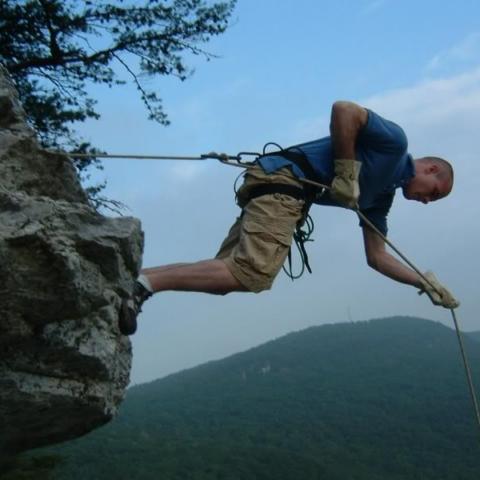Try Australian RAPPELLING
 Australian abseiling (also known as Australian rappelling, Rap Jumping or deepelling) is the process of descending a fixed rope in a standing position while facing the ground.
Australian abseiling (also known as Australian rappelling, Rap Jumping or deepelling) is the process of descending a fixed rope in a standing position while facing the ground.The technique is used as a military "assault" technique whereby a soldier is belayed, allowing them to face down the descent and fire a weapon.
In Australia, the technique is not commonly known as "Australian", or even "rappelling"; instead the term "abseiling" is more commonly used and the technique is referred to as "Geneva" style.
To Australian rappel, you will need:
- A rappelling cord
- A harness with D-rings
1. Attach the cord to your harness. This is one of the most important steps when Australian rappelling. You will need to make sure your harness has D-rings, which are attachments that allow you to easily go back and forth from high to low points. Some people find it easier to put their harnesses on backwards. Use whichever way seems more comfortable for you.
2. Tie one end of the cord to the bottom of your height point. Your height point is the top of where you will be climbing up and down from. Find a steady surface to tie your rope to. Try fiddling with the surface to ensure it is safe to be used for Australian rappelling. Once the end of the cord is secure, pull on it to ensure that the knot is tight enough to support the force of your Australian rappelling.
3. Climb to your desired height. Once the bottom location is secured with the cord, climb to your highest desired height. Make sure that the cord is long enough to extend from your lowest point to your highest point. If so, then proceed.
4. Tie the other end of the cord to a secure place at the top. At the top of your destination, find another secure place to tie your cord. Tie the knot securely. Then, pull on your cord to ensure that the knot can support the force of pulling on it.
5. Navigate back and forth. You will need to navigate from your high point to your low point carefully. Do not try to go too fast. Take your time.
Source: mademan.com, wikipedia.org